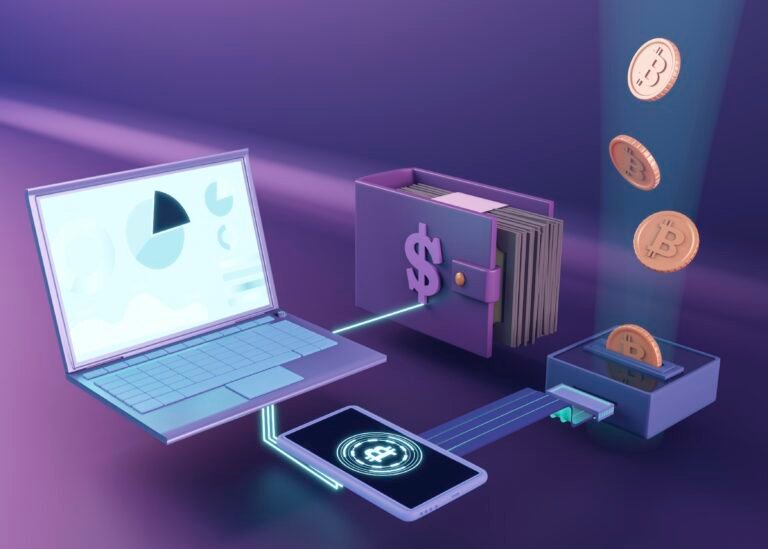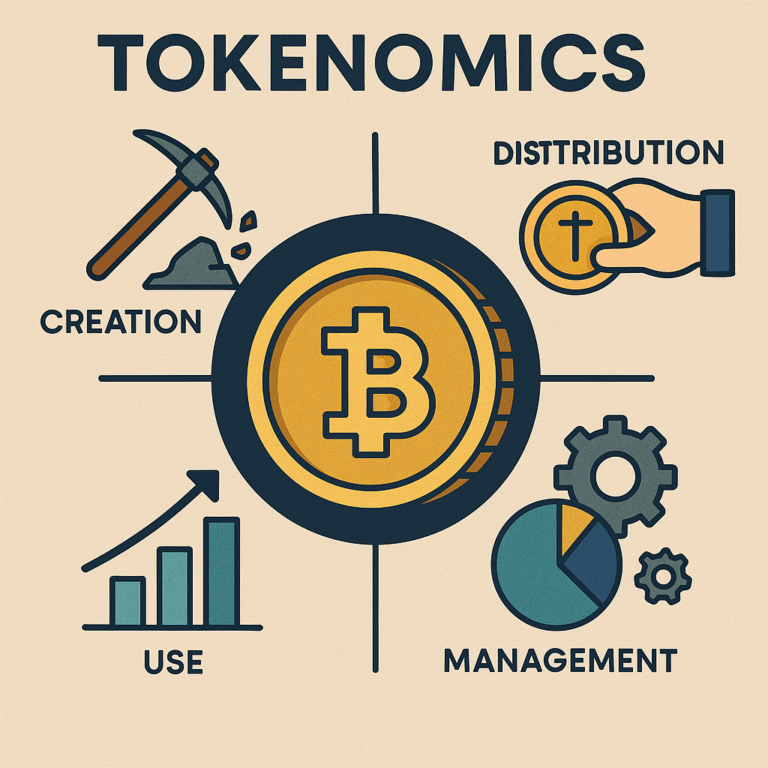10 Underrated Crypto Tips No One Talks About
1. Don’t Just HODL—Know When to Let Go
Long-Term Doesn’t Mean Forever
Crypto Tips: The phrase “HODL” became a crypto rallying cry for surviving market dips. But holding blindly isn’t always smart. Not every coin you buy is meant to be a long-term hold. Some projects lose steam, get abandoned by developers, or simply fail to deliver. Staying loyal to a sinking ship can hurt more than help.

Table of Contents
How to Spot Signs of a Losing Investment
- Declining developer activity: Use tools like GitHub or CryptoMiso to track how active a project is. No updates? Big red flag.
- Shrinking community: When Telegram/Discord chats go quiet or social media buzz disappears, interest is fading.
- Broken promises: If the roadmap keeps getting delayed or changed without transparency, it’s a sign of poor leadership.
- Exchange delistings: If major platforms drop the token, it often signals trust issues or legal troubles.
✅ Pro tip: Reevaluate your portfolio regularly. Holding forever doesn’t make you a disciplined investor—it can make you an emotional one.
2. Avoid “Influencer Coins” Like the Plague
Hype ≠ Value
Just because a coin is trending on Twitter or being shouted out by a popular YouTuber doesn’t mean it’s worth your money. Influencers are often paid to promote tokens—and they rarely disclose that upfront. These coins might pump briefly, but they usually crash just as fast, leaving retail investors holding the bag.
Red Flags in Sponsored Tweets and YouTube Videos
- Too much excitement, zero substance: If the influencer says “This coin will 100x!” but doesn’t explain the utility or tech—run.
- Overuse of buzzwords: “Next Bitcoin,” “AI-powered DeFi,” or “game-changing NFT protocol” often mask lack of real value.
- No mention of risks: Legit reviews always mention both pros and cons. Shilling without balance = red flag.
- Recycled promo content: Multiple influencers posting the same coin at the same time usually signals a coordinated paid campaign.
✅ Pro tip: Follow builders, not shillers. Real insight often comes from developers, project teams, and community discussions—not influencers chasing clicks.
3. Use Multiple Wallets—Not Just One
Diversify Wallets to Minimize Risk
Putting all your crypto in one wallet is like keeping all your cash under one mattress—it’s risky. If your wallet gets hacked, compromised, or you simply lose access, you lose everything. Spreading assets across different wallets (and even wallet types) adds an important layer of security.
Hot, Cold, and Custodial: Know the Differences
- Hot Wallets (e.g., MetaMask, Trust Wallet): Great for daily use, but vulnerable to online threats.
- Cold Wallets (e.g., Ledger, Trezor): Best for long-term storage—offline and nearly impossible to hack.
- Custodial Wallets (e.g., Binance, Coinbase): Easy to use but controlled by a third party; not your keys = not your crypto.
✅ Pro tip: Use a hot wallet for small, active trades, a cold wallet for long-term holdings, and never store life-changing amounts in a single location. Always back up your recovery phrases offline—twice.
4. Read Between the Lines of Whitepapers
What’s Missing Matters More Than What’s There
Whitepapers are supposed to explain what a project does, how it works, and why it matters. But many are filled with vague promises, technical jargon, and flashy diagrams—designed to impress rather than inform. A whitepaper that says a lot without saying anything specific is a major red flag.
How to Spot Copy-Paste or Vague Promises
- Generic goals: “We aim to revolutionize finance” or “This will change the world” without clear steps = empty hype.
- No team details: If you can’t verify the founders or developers, you’re likely dealing with a ghost project.
- Lack of tokenomics: How are tokens distributed? Is it fair or heavily skewed toward insiders and VCs?
- Plagiarism: Some projects straight-up copy parts of other whitepapers. Tools like Copyleaks or a quick Google search can catch this.
✅ Pro tip: A good whitepaper should explain what the project does, why it’s needed, how it works, and how it benefits users. If it doesn’t hit those basics—move on.
5. Network Activity > Price Action
Follow the Chain, Not the Chart
Price is just one piece of the puzzle. A token can pump on hype but still have little actual usage. On-chain metrics—like daily active users, transaction volume, and smart contract calls—reveal what’s really happening behind the scenes. Real adoption shows up on the blockchain before it shows up in price.
Why Developer and User Metrics Matter More
- Developer activity: Frequent updates on GitHub often indicate an active and evolving project. Dead repos = dead project.
- Wallet growth: Steady increase in unique wallet addresses suggests rising user interest.
- Protocol usage: In DeFi projects, watch metrics like Total Value Locked (TVL) and lending/borrowing activity.
- Gas usage: On chains like Ethereum, rising gas fees often reflect increased usage and demand.
✅ Pro tip: Use tools like DeFiLlama, Token Terminal, or Glassnode to track real blockchain data—not just emotional price swings.
6. Tax Planning Isn’t Optional (Even if You’re in the Green)
Why Uncle Sam (or Your Local Govt) Cares
Cryptocurrency tax rules are tightening worldwide. Gains from trading, staking, or even receiving crypto as payment are taxable events. Ignoring this can lead to costly penalties, audits, and headaches down the line. It’s better to plan ahead than scramble when tax season arrives.
Tools to Track Taxable Events Before It’s Too Late
- Record every transaction: Buy, sell, swap, or earn — all count.
- Use crypto tax software: Platforms like CoinTracker, Koinly, or TokenTax simplify reporting.
- Keep wallets and exchange history organized: Disorganized records can mean lost deductions or errors.
- Consult a crypto-savvy accountant: Tax laws vary widely by country and change often.
✅ Pro tip: Even if you’re not making big profits now, tracking from day one saves massive stress and money in the future.
7. Look Beyond the Top 10 Coins
Hidden Gems Live in Page 3 of CoinMarketCap
Crypto Tips: Most beginners stick to the big names—Bitcoin, Ethereum, and a handful of others. But some of the best opportunities lie deeper in the rankings. Lesser-known projects often have innovative tech, real use cases, and community-driven growth that the market hasn’t fully priced in yet.
Fundamentals Still Matter in Low-Cap Projects
- Check the team and roadmap: Smaller projects can be risky, but strong leadership and clear milestones are good signs.
- Community engagement: Active, helpful communities show a project with momentum.
- Partnerships and integrations: Real-world use cases and partnerships mean more than hype.
- Liquidity and volume: Beware projects with low liquidity—they’re harder to sell and more prone to price manipulation.
✅ Pro tip: Do your own research (DYOR) carefully when diving beyond the top coins—risk is higher but so is potential reward.
8. Learn to Use a Blockchain Explorer
Get Data Straight From the Source
Blockchain explorers like Etherscan, BscScan, or Solscan allow you to see every transaction, wallet balance, and smart contract activity publicly and transparently. Instead of relying solely on news or social media, these tools give you unfiltered, real-time insights.
How to Verify Wallets, Contracts, and Transaction History
- Check contract verification: Verified contracts have their source code published, which reduces the risk of scams.
- Look up wallet activity: See how many transactions, how often funds move, and whether tokens have been locked or dumped.
- Analyze token holders: Are most tokens held by a few wallets? That’s a red flag for possible price manipulation.
- Monitor transaction volume: Sudden spikes can indicate pump-and-dump schemes or coordinated buying.
✅ Pro tip: Spend time learning explorer basics—it’s your best defense against fraud and misinformation in crypto.
9. Trading Volume Can Lie—Here’s How
Wash Trading & Fake Liquidity Explained
Not all volume is real. Some exchanges or projects use wash trading—buying and selling to themselves—to create fake activity. This artificial volume can mislead investors into thinking a coin is more popular or liquid than it actually is.
How to Spot Real Volume vs. Manufactured Pump
- Check multiple exchanges: If volume is only high on obscure platforms, it might be fake.
- Look for sudden volume spikes with no news: Unexplained pumps often mean manipulation.
- Compare volume to price movement: Volume should support the price trend, not contradict it.
- Use tools like CoinGecko or Messari: They sometimes highlight suspicious volume patterns.
✅ Pro tip: Always verify volume authenticity before entering a trade—don’t let fake numbers fool you.
10. Your Mental Health Affects Your Portfolio
The Hidden Cost of Constant Price Watching
Crypto markets never sleep. The temptation to check prices every minute can lead to stress, anxiety, and poor decision-making. Emotional trading is one of the fastest ways to lose money, especially in volatile markets.
Strategies to Avoid Burnout in a 24/7 Market
- Set specific times to check your portfolio: Avoid obsessing over every tiny price change.
- Use alerts instead of constant monitoring: Let technology notify you only when key levels are hit.
- Take regular breaks: Step away to reset your mind and reduce stress.
- Focus on your long-term plan: Remember why you invested, and stick to your strategy.
✅ Pro tip: Protecting your mental health is protecting your money. A calm, clear mind makes better financial decisions.
Conclusion
Crypto investing isn’t just about chasing quick gains or following the latest hype. The underrated tips covered here—like knowing when to sell, avoiding influencer-driven scams, using multiple wallets, and paying attention to real on-chain data—can make a huge difference in your long-term success. Remember, crypto markets are fast, complex, and often unpredictable, so staying informed, cautious, and mentally balanced is key. By applying these lesser-known strategies, you’ll build a stronger, smarter portfolio that can weather the ups and downs ahead.
Read Also: 9 Mistakes New Crypto Traders Make







